new posts in all blogs
Viewing: Blog Posts Tagged with: write, Most Recent at Top [Help]
Results 1 - 25 of 67
How to use this Page
You are viewing the most recent posts tagged with the words: write in the JacketFlap blog reader. What is a tag? Think of a tag as a keyword or category label. Tags can both help you find posts on JacketFlap.com as well as provide an easy way for you to "remember" and classify posts for later recall. Try adding a tag yourself by clicking "Add a tag" below a post's header. Scroll down through the list of Recent Posts in the left column and click on a post title that sounds interesting. You can view all posts from a specific blog by clicking the Blog name in the right column, or you can click a 'More Posts from this Blog' link in any individual post.
Hi, folks. I'm a novelist as well as a picture book author. I am especially fortunate that way, lucky, if you will. I am half a century old and over the course of my journey, the nature of luck has been made clear to me.
Some lucky people are born into wealth and privilege giving the freedom to follow whatever whim the wish. Some lucky people win the genetic lottery and just have more brain power than the rest of us. Another group of lucky people stumble into the right circumstances: winning a big prize or getting that big break. One more group of lucky people just have excellent connections. Then there are the people like me.
How do I tap into luck? I mean I live in suburbia. I drive a decade old minivan that needs some work. I live in a college town that has a university in it that is all about engineering and business. Artist don't flock here. There isn't an independent bookstore for almost a hundred miles. I did not attend an exclusive high school or college. I was a below average student. No prizes. No big breaks. And did I mention that I live in a place "scourged by fire ant and choked with bull nettle." People find me odd here. Many say "I'm so strange." My lucky secret: I do what I love and I basically do it for free.
Doing what you love for free is complicated. I volunteer some. If you are not being paid, folks doubt your professionalism and don't respect your work. Once upon a time anyone could write, but now people have MFAs have a real edge. There are other downsides: someone is always pressuring me to give up this low pay madness and get a real job. I hide at parties when people rave about the luck that has led them to overwhelming financial success. My year end balance sheet is beyond dismal, in spite of my high hopes and hard work.
And yet I feel oh, so, lucky. I write stories every day. I have joined a journey that mankind has been on since before our fledgling species could write words. I create provocative beginnings, middles, and ends. I've gotten better when I thought I couldn't. I have had the opportunity to work with awesome writers and love it. I feel so lucky to live a creative life. So throw away the bank statement and define your life however you want to.
In closing, I'm going to update my current work. At the end of March I'm going to rerelease PLUMB CRAZY. It will be available in paperback and as an ebook. It will no longer be written by me but by my alter ego, Cece Barlow. I hope that if you had not a chance that you will give my book a read.
You might also want to check out cecebarlow.blogspot.com, the new home from my work for young adults and the young at heart. It's still in the prelaunch phase but it is getting there. Please come back next week for more my Lucky March series.
Here is the doodle: Happy.

A quote for your pocket.
Luck is a dividend of sweat. The more you sweat, the luckier you get. Ray Kroc

By:
Darcy Pattison,
on 7/22/2014
Blog:
Darcy Pattison's Revision Notes
(
Login to Add to MyJacketFlap)
JacketFlap tags:
novel,
scene,
plotting,
write,
revise,
action,
Novel Revision,
plot points,
off-stage,
Add a tag
The ALIENS have landed!
"amusing. . .engaging, accessible," says Publisher's Weekly
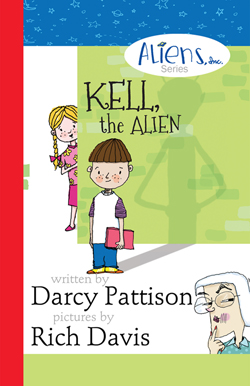 |
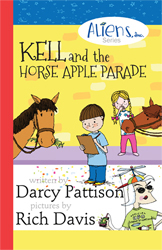 |
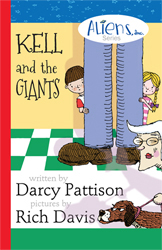 |
Here’s a common problem that I see in first drafts: the main action has happened off-stage.
Think about Scarlett O’Hara and the other southern women sitting at home waiting; in an attempt to avenge his wife, Frank and the Ku Klux Klan raid the shanty town whereupon Frank is shot dead. But the raid takes place off-stage.

Or, think about times when a weaker character stays home, while the adventurous character is off doing something. Sports stories are hard when the POV character is watching the on-field action.
This can be a real trap for children’s novels if an older sibling or parent is doing something fun/exciting/scary/etc off stage.
Another challenging situation is when a bully is planning something and the POV victim is just trying to avoid that.
Or, maybe you’ve planned a great scene, and the main character is present, but you don’t write that scene. Instead, what you write is something like this: “The next morning, Elise lay in bed and went over the previous night in her head.”
No. That doesn’t work!
Does this always need to be changed? No. But it’s a major problem and challenge as you revise. Here are some tips.
Recognize the problem. As you write the first draft and revise it, you should be evaluating the scenes. Ask: Who hurts the most in this scene. It should almost always be the main character. If it’s someone else, why isn’t THAT character the hero/ine of the story?
Put the POV Character in the action. When you find a scene where the main action is off-stage, look for ways to rethink the plot and scenes and put the main character in the thick of the action. It’s why Captain Kirk leaves the Enterprise and goes down to the planet over and over and over. Really? No Captain would be allowed to jeopardize his life that much and give over the control of the ship to a junior officer. It’s unrealistic–but great storytelling.
Make the story about how the off-stage action affects the POV character. In Gone with the Wind, Frank and the other men go off to avenge Scarlett’s honor, but the POV stays firmly with Scarlett. It’s about her growing realization of what the men have gone off to do, the opinion of the other women, and eventually the women’s reactions when the men come back. This is a risky way to write a scene, because the real stuff happens off stage; but it can work if you keep the focus right.
Write the scene. If your character is just thinking about what happened last night, it’s a simple fix. Write the @#$@#$@# scene! Sometime this happens when the author is afraid of the emotions in a powerful scene; the author avoids writing that scene and tries to jump forward in time. It never works. You must write the scene that you fear. you must write the exciting scene because your reader demands it; that is the exact reason why they come to your story. Don’t cheat them out of the emotionally experience.

Really. I’m not dead. I just ate a piece of cake. I’ve just been AWOL from blogging for a while. I’ve been held prisoner by the Dust Bunny regime in my home. They declared war because I’ve started back with my FlyLady routine. The bunnies claim I am “messing with the natural order” of things […]
Follow our Pinterest Boards
Do you ever stop learning? I don’t. I may be able to teach a number of things and bring out the best in my students, but for myself, I keep learning.
Here are some things I’ve learned lately.



Follow our Pinterest Boards
A friend and I are working on an idea for a picture book based on a true life event. The challenges in doing this are multiple.
First, it has to has to interest the audience of small children and adults, because picture books really have two audiences, the kids and the adults who read to the kids. It means that there has to be a surface story and a deeper story.
Second, while I must remain true to the events, there still needs to be a story. I know there is a lot of discussion about some kids wanting “straight up science”, you don’t have to use a narrative arc; nevertheless, narrative nonfiction is my preference. The biggest challenge, though, is to find a story in the facts, one that resonates with the audience(s).
 Third, one reason to write a nonfiction picture book is to educate readers about topics that are important. In this case, the topic is endangered species and how loss of habitat is putting stress on certain populations of animals. It’s also about some successful intervention strategies that are current and could be a hot topic. Oh, wow, that sounds SO boring, even to me. And therein lies the challenge: how do you make the information accessible to a picture book audience, i.e. put it in words they can understand? And how do you make them care about the issues at stake?
Third, one reason to write a nonfiction picture book is to educate readers about topics that are important. In this case, the topic is endangered species and how loss of habitat is putting stress on certain populations of animals. It’s also about some successful intervention strategies that are current and could be a hot topic. Oh, wow, that sounds SO boring, even to me. And therein lies the challenge: how do you make the information accessible to a picture book audience, i.e. put it in words they can understand? And how do you make them care about the issues at stake?
Fourth, all the while, you must tell a story and it must be under 1000 words. It must have a beginning, middle and end, setting up a conflict and resolving it someway.
I kept asking my friend: “Where is the story?”
She had no answer. I had to find it myself.
To do this, I looked at primary source materials: I looked up the exact place the event occurred on Google Earth and looked at photos uploaded from nearby locations; I read original reports on the event from scientists involved; I researched the animal in question and its habitats. I immersed myself in everything I could for 48 hours. I slept. Then, I wrote.
I didn’t outline, because the story line was totally clear. What was at stake was the writing itself. How you write it is everything.
And the process worked. This is a time when I could not have predicted that the story would turn out as it did. Sometimes, you simply have to write a first draft and see where it goes, let your subconscious do its work. But at the same time, my analytic side was watching: where was there a spark of emotion? where did something get written that might create a pattern?
In the end, I am thrilled with the draft. I didn’t think the story would work as a picture book. But I trusted the process: I wrote.
What do you need to write today? Trust the process.

Adding emotional depth to a novel is important enough to warrant a special pass through the manuscript. This video talks about how I did that on a recent mss.
If you can’t see this video, click here.
This is an experiment with doing a video to explain something about writing and revising. Please comment and let me know what you think about doing this with video.

The biggest problem I have in planning a plot–still, after all these years–is that I am too nice to my characters. I can’t imagine the horrible things that need to happen, without a big struggle.
Listen up: What is the worst thing that could happen to your character? It MUST happen at the climax of the story. You can’t wimp out and make it easy on him/her. It must be totally and utterly horrible.

When your character walks through the doorway to Failure, your plot really gets going.
Of course, I mean that within the context of your story. You may have a pastel palette for this story, so the absolute worst thing might be if Jill has to clean her room. Or, you may have a palette with deep colors, including black. Jill must face the death of her best friend and she has to choose to take her place or not. Or, worse, Jill may face a life-sentence in a horrible jail, a living hell.
Whatever it is, the character MUST be faced with the worst.
Then, you can work backwards from there and create a series of scenes that lead up to that. At every step, things MUST get worse.
I also try to pair that with an internal character issue: the climax is the point where the internal and external story arcs come together. The resolution of that climax turns on some internal change in the character. The “absolute worst” thing for the character to face is determined by the internal arc. What would challenge something fundamental in your character? Jill want more than anything to gain her mother’s approval; but when her best friend is threatened, Jill goes against her mother’s commands to save her friend. She is now thinking independently.
Why is this so hard for us to do? Why are we peacemakers?
How do you overcome our “tea party” mentality so you can be brutal to your characters?

Besides writing, my passion is making quilts. Now, this is a complex undertaking and takes time. I’ve learned to break the tasks into small chunks, something doable in only 15 minutes. For example, I cut one fabric one day, another fabric the next. I might sew quilt pieces together one day, and the next day actually iron the seam allowances. Taking it but by bit, it’s easy.
What if you only have 15 minutes a day to write?

Amish Quilts made by 10 year olds.
Maybe you’re one of the writers who has to work an outside job to make a living, and you do major writing on holidays, like Memorial Day. But during the week, you might be able to snatch a 15 minute time block here or there. Or, if you have kids, you only have 15 minutes at a time. Here are some examples of daily writing tasks that anyone can do.
Characters
- Lists of names
- Description of a character
- Dialogue: have your character talk about the story plot with his/her best friend
- Try three different voices for your character
Setting
- Description of a setting
- Explore how the setting changes with different weather
- List of actions that a character could take in this setting
Plot
- List of conflicts
- List of ways to add more tension
- List of ways to up the stakes
Scene
- Plan a scene by listing the story beats
- Write the introduction of a scene
- Write the middle of a scene
- Write the end of a scene.
Revision
- Read aloud a scene/chapter
- Edit the scene/chapter for great sensory details
- Edit the scene/chapter for strong language
- Edit the scene/chapter for voice
- Edit the scene/chapter for sentence variety
Novels are complex. But bit by bit, slowly, you can write a novel. If you write one page a day, you complete 5 pages a week (2 days off for Sat and Sun). That’s 20 pages a month, and 240 pages a year. That’s a novel.
You don’t need 40 hours a week, you only need 15 minutes a day.

You CAN be a Children’s Book Author
 I’m Darcy Pattison, and I’m a children’s book author.
I’m Darcy Pattison, and I’m a children’s book author.
Wouldn’t you love to say that about yourself?
Wouldn’t you love to be the one signing books for kids and families?
Twenty years ago, I decided to write a children’s picture book. I had four kids and we read nightly, hundreds of children’s books. I thought I knew what was picture books were all about. Boy, was I wrong!
I wish I had had a writing teacher who could have explained the ins and outs of writing and selling picture books. And that’s why I decided to help others.
You CAN be published in eight languages
Here are some of my picture books and they are available in eight languages.
Your Biggest Fear: Rejection or Regret?
Because I write, just like you, I understand the fears at the beginning of a writing career. What is your biggest fear?
Rejection?
Not mine. Instead, I fear getting to the end of my life and looking back and realize that I never tried. I fear Regret and I fear it much, much more than I fear Rejection.
I’ll have to say, though, that rejection DOES hurt. Unlike regret, I can help with rejection. With the right information and exercises, your story can improve and catch an editor’s eye.
You CAN Get Acceptance Letters and Contract Offers
The first thing you need to change those rejection letters into acceptance letters is knowledge. The How to Write a Picture Book Ebook explains the kinds of picture books,
Life itself is the most wonderful fairy tale. ~Hans Christian Anderson
Each fairy breath of summer, as it blows with loveliness, inspires the blushing rose. ~Unknown
 2 Comments on Fairies in the Garden, last added: 4/9/2012
2 Comments on Fairies in the Garden, last added: 4/9/2012
After a stinging rejection: today, just a quote from Art and Fear: Observations on the Perils (and Rewards) of Artmaking, by David Bayles and Ted Orland.
“You make good work by (among other things) making lots of work that isn’t very good, and gradually weeding out the parts that aren’t good, the parts that aren’t yours. It’s called feedback, and its the most direct route to learning about your own vision. It’s also called doing your work. After all, someone has to do your work, and you’re the closest person around.”
It’s called doing your work.
Work, Darcy, work.

BEWARE: Writer at Work!


By:
Darcy Pattison,
on 2/13/2012
Blog:
Darcy Pattison's Revision Notes
(
Login to Add to MyJacketFlap)
JacketFlap tags:
conflict,
novel,
authors,
deus ex machina,
write,
revise,
rose,
starr,
how to,
external,
internal,
ending,
caroline,
protagonist,
Add a tag
Debut Novelist Prunes her Rosebush
Introduced first in 2007, debut children’s authors have formed a cooperative effort to market their books. I featured Revision Stories from the Classes of 2k8, 2k9, 2k11 and this year, the feature returns for the Class of 2k12.
Guest post by Caroline Starr Rose, author of MAY B., MG, January 2012
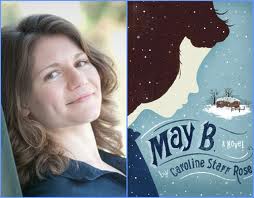
Caroline Starr Rose, author of May B.
My first-round edits arrived with a four-page letter attached. In it my editor praised my writing (“This story is like a prize rosebush that needs just a bit of pruning!”) and pointed to some “thorns” that needed work.
(From Darcy: Ha! Notice Caroline’s last name.)
- More external conflict to go with all the internal business
MAY B. takes place on the 1870s Kansas frontier. Throughout much of the story, my protagonist fights to survive a blizzard. Nice external conflict, right? But much of the story is internal. There’s little dialogue, for one thing; May spends most of the story alone. She wrestles with memories of her inadequacy in school, and in her abandonment goes through stages of confusion, anger, fear and despair. But without some other tangible challenge, the story was lacking. My editor gave me a few ideas, and I latched onto one: a wolf that could terrify, challenge, and ultimately mirror my protagonist’s struggles.
- Whiny protagonist — don’t let your audience lose compassion!
I find it hard to stick with a book with a whiny character. To learn that May sometimes slipped into overkill was exactly what I didn’t want and exactly what the story didn’t need. As MAY B. is divided into three sections, my editor suggested I let May get her complaints out in the first two parts, but the third needed to be about growth, resolve, and moving forward. This advice provided a good way for me to watch my character’s progression and to temper her outbursts. Once May’s taken charge of her situation, there could be moments of doubt, but she couldn’t fall back into old behaviors. She had to push ahead.
- Ending = Deus Ex Machina
For those of you unfamiliar with this term, here’s the definition:
- (in ancient Greek and Roman drama) a god introduced into a play to resolve the entanglements of the plot.
- any artificial or improbable device resolving the difficulties of a plot.
My original ending was contrived. It just didn’t work. In order to change this, I had to weave bits into the beginning of the story to make the ending more plausible, and I had to be okay with leaving the outcome/redemption of one character, Mr. Oblinger, open ended. This was hard, as I really believed in his motives (even if they didn’t play out as he anticipated), but in keeping with an ending that wasn’t “artificial or improbable”, there was no room for this.
Tying the Revision Process Together
Throughout the revision

By:
Darcy Pattison,
on 9/19/2011
Blog:
Darcy Pattison's Revision Notes
(
Login to Add to MyJacketFlap)
JacketFlap tags:
story,
kids,
book,
picture,
picture books,
write,
revise,
how to,
childrens,
Add a tag
Random Acts of Publicity DISCOUNT:
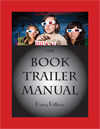
$10 OFF The Book Trailer Manual.
Use discount code: RAP2011
http://booktrailermanual.com/manual
Writing is rewriting
 Guest post by Anastasia Suen
Guest post by Anastasia Suen
For years I have been saying that writing is rewriting, and now I have a book that shows it quite clearly, my new picture book, Road Work Ahead (Viking 2011).
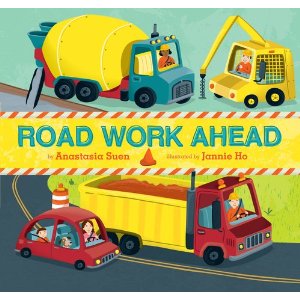
This picture book is short, like most of my books. It’s only 120 words, but those words have been rewritten over and over again. Yes, this one has been a lo-o-o-ong time coming. I started this book when my son was 2…and now he’s 27!
Picture Book Inspiration
When my son was 2, he loved to look at all of the trucks and machines along the road, so I started snapping pictures for him. I made him a “look book” that later turned into a picture book. I loved the story in that book, so I sent it out to editors, but it kept coming back, over and over. Editors said they loved it, too, but it wasn’t quite ready. So I kept rewriting it and sending it out…and now 25 years later, it’s finally a book you can hold in your hand.
The 6 Ws of Story
So what made the difference? I used ALL of the 6 Ws this time. I made sure the story had who, what, when, where, why and how. Using all 6 Ws made it a story, not just a list of machines along the road. Stories sell, but lists…well, not so much.
New Beginning and Ending. After the story finally sold I thought it was ready to go, but my editor thought it needed something more. She asked me to write a new beginning and ending, so we knew why the little boy was on the road looking at all of the road work. That also added a who, by showing us the little boy before he got into the car.
So I added my mother and her famous homemade oatmeal cookies to the book. (We used to eat them right after they came out of the oven. Yum!) Driving to Grandma’s house for fresh, warm, homemade oatmeal cookies is definitely a reason to keep going despite all of the traffic delays due to the work along the road. And when you get to eat them at the end of the book, ah, sweet reward! Adding 2 short stanzas was all it took.
The change I made was used by the Publishers Weekly reviewer to describe the book.
“A batch of Grandma’s homemade oatmeal cookies beckons, but for this backseat narrator, the sights and sounds along the road to her house are equally compelling:
“Road work ahead./ Move over. Go slow./ Jackhammers crack./ Look at them go.’”
The text quoted in the review was the original beginning of the story. I had jumped too far into the action. What worked better was taking a few steps back and letting the reader know who the narrato

By: Stacy A. Nyikos,
on 4/1/2011
Blog:
Stacy A. Nyikos
(
Login to Add to MyJacketFlap)
JacketFlap tags:
borrow,
steel,
University of Virginia,
side effects,
Air and Space Museum,
DC Cupcakes,
writer,
write,
Charlottesville,
Add a tag
 Side effects. There are good ones and bad ones. Second hand smoke, not so good. Oxygen, good. Did you know that writers emit their own side effects? And I don't just mean books.
Side effects. There are good ones and bad ones. Second hand smoke, not so good. Oxygen, good. Did you know that writers emit their own side effects? And I don't just mean books.
You might be a writer if...your family suffers from symbolismus. Analogisia. Or, the worst ever, metaphorimia.
Serious, serious ailments, believe you me.
I've been a writer for a few years now, but it wasn't until recently that one of my daughters finally erupted with a bad case analogisia.
We'd just come back from Spring Break. My daughters and I had visited their godparents in Charlottesville, VA. My husband and I had lived there for five years around the time our first was born. I would still love to move back. I love the outdoors there.
While we were there, we had a great time. We went hiking at lots of different parks. Went up to DC and got our very own DC Cupcakes. Saw the Air and Space Museum. Did the Mount Vernon and Ash Lawn thing. We were everywhere. Did tons. The girls loved it.
They loved it so much that when we came home my youngest crawled onto my lap one day after school, and started crying. Uh-oh.
"What's wrong, sweetie. Do you miss Charlottesville?" We all missed C-ville. Our friends. The works.
"Mama," she sniffled. "Charlottesville is like Dragon Wishes and home is like Rope 'Em."
I should have seen the signs right away. The word "like". The commonality of books vs. places. It was analogisia for sure.
But I'm just a writer not a critic. I nodded and came up with my surefire mom response when I had no clue, "Uh-huh."
Not exactly Shakespeare, I know.
"Gees Mom," she said with an exasperated tone. "You know, Dragon Wishes is a middle grade novel."
[my middle grade novel]
"And its gots lots of stuff in it. Rope 'Em is a picture book."
[um, yeah, my picture book]
"It's shorter. Not as many pages of things happening. That's what home is like. Do you get it now?"
Um, yeah. Got it.
I wrote it down, too. Because, as you know, good writers borrow. Great writers steal. But that's a different post.
So now I watch for the telltale signs of secondhand writing. She's already exhibited a few others. Making up her own words. Geroninball. Yeah. Gotta love that one. Editing my work. Don't love that one so much. She's tough!
So beware writers out there. Your family members may have already come down with any or all of these pesky ailments. The only thing you can do is be prepared. Keep paper and pen handy at all times. And family members, be forewarned.
The effects of writing are serious. They get under your skin. Change the way you think. The way you talk. Make you...dare I say, into a writer!
How Does Your Character Change?
You know your character must change somehow over the course of your novel. But how? And more than that, how do you sync the changes with the external plot? The middle of a novel can suffer from the dreaded “sagging middle” and it’s mainly because you don’t have a firm handle on the character’s inner arc and how it meshes with external events.
I’ve found three approaches to the inner arc, each trying to laying out how the character changes. While these overlap a lot, there are differences in how the emotional changes are approached.
Hero’s Journey: Quest for Inner Change
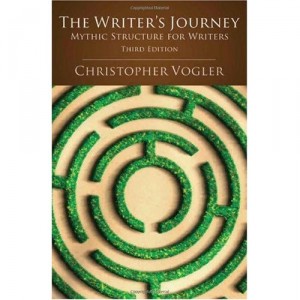 In the Hero’s Journey, laid out so well in Christopher Vogler’s book, The Writer’s Journey, a character receives a Call to Adventure that takes him/her out of the normal and ordinary world into a world where they must quest for something. One of the key moments in this paradigm is the Inmost Cave where the character faces his deepest fears.
In the Hero’s Journey, laid out so well in Christopher Vogler’s book, The Writer’s Journey, a character receives a Call to Adventure that takes him/her out of the normal and ordinary world into a world where they must quest for something. One of the key moments in this paradigm is the Inmost Cave where the character faces his deepest fears.
Melanie as an Example
So, we’ve got Melanie who wants more than anything else to get her mother’s approval, but can’t because her mom’s a chef and Melanie can’t cook worth a flip.
In the Hero’s Journey, Melanie might get a Call to Adventure: a challenge to create the world’s largest hot fudge sundae. Her darkest moment will come when she realizes Mom think’s she’s real goof-up and she’s not up to the task. Of course, she wants to give up, but somehow manages to rally (perhaps, recruiting friends to help, learning to make a sundae, etc.) and create something that makes Mom proud.
Iron Sharpens Iron – Friendships
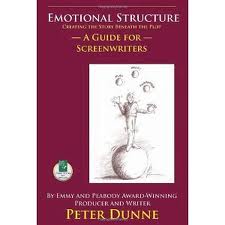
As iron sharpens iron, so one man sharpens another. Proverbs 27:17
In this paradigm, two characters cross paths in Act 1 and usually hate each other, but Act 2 throws them into a situation where they must act together. Here, the characters’ strengths and weaknesses work to create change. It’s an up and down battle of learning to trust each other and ultimately find some sort of love, whether it’s platonic, romantic or maternal. Key moments are the midpoint when they totally lose faith in one another and a re-commitment to each other as they move from Act 2 to Act 3. Act 1 and 3 focus on the external story, while Act 2 follows how the friendship affects the characters.
For more on this paradigm, read, Emotional Structure: Creating the Story Beneath the Plot by Peter Dunne.
Back to Melanie:
Melanie agrees to participate in the Biggest Sundae Ever contest, but as the contest starts she’s assigned a dunce to work with, Phillip RunnyNose. They clash immediately and have different ideas on how to create the required masterpiece: Melanie wants total creative control, while Phillip wants to just take pictures of the masterpiece. During their practice run–about the middle of act 2–Phillip leaves the ice cream out to soften up, but it melts, ruining the prac
Balancing the Need for Foreshadowing
I’ve been revising a mss, taking a break from doing a new project. Recent feedback told me that my novel was great, except the opening didn’t set up the “magic” of the story well enough. It was too great a shock when it suddenly occurred on about page 50.
 Yes, openings should set up what comes later in many ways. Opening are a balancing act, a sleight of hands between the here-and-now and the coming-story. You need to be firmly in the moment. I definitely fall into the camp who wants an opening scene with physical action, and not just a character introduction. I try to write something set in a particular place and time, with a definite goal for the characters. But you must also foreshadow.
Yes, openings should set up what comes later in many ways. Opening are a balancing act, a sleight of hands between the here-and-now and the coming-story. You need to be firmly in the moment. I definitely fall into the camp who wants an opening scene with physical action, and not just a character introduction. I try to write something set in a particular place and time, with a definite goal for the characters. But you must also foreshadow.
Foreshadowing is anything that lets the reader have a hint of what’s coming.
Tone, Mood and Voice. I think I had already done a good job at setting up the tone (the main character’s attitude), the mood and the voice of the story. It has a medieval setting, with a hint of mystery and magic. But that wasn’t enough.
Hints. More than just that, I needed specific hints of what was coming. These hints needed to hook the reader, not by explaining everything but by creating compelling questions in the reader’s mind. In the new opening, I firmly stayed in the here-and-now, and if the main character already knew something, I didn’t explain it. Instead, I let the reader wonder what the main character knew that the reader didn’t.
In other words, I didn’t explain everything. I let some things just stand as stated, that thus-and-so had happened. There were some explanations, but the key here was to achieve clarity in the scene, while still teasing the reader into turning the page.
It’s a delicate dance, staying in the present, yet pointing toward what’s coming. But foreshadowing is one of the goals of opening chapters or prologues.
Here are some tips:
- Make sure you stay in the present scene. Don’t drift into long explanations or flashback.
- Don’t explain everything. If the main character would already know this, think hard about explaining it to the reader. At some point they may need to know this, but you can control the when of the explanation. If the action/emotions of the scene are clear without the explanation, consider holding off.
- Mirror what is to come. Do you need to set up an argument between a husband and wife? Maybe a smaller argument with a co-worker can foreshadow the coming blow-up. Think about how you might do a progression: argument, worse argument, worst argument.

Wise Men Give Writing Tips
For the last few years, Fiction Notes has offered writing tips from famous holiday or winter characters. In keeping with that tradition, we offer this year 7 writing tips from the 3 Kings.
Happy Holidays!
Previous Holiday Writing Tips
Frosty the Snowman’s Top 6 Writing Tips
Rudolph The Red Nosed Reindeer’s Top 5 Writing Tips
Santa Claus’s Top 5 Writing Tips
The Gingerbread Man’s Top 5 Writing Tips
12 Days of Christmas Writing Tips
Download the FREE pdf of Winter Writing Activities.

We Three Kings
- We three kings of Orient are
Bearing gifts we traverse afar
Field and fountain, moor and mountain
Following yonder star
Orient the reader. Character, setting and goals are immediately set up here. We know WHO (Kings), WHAT (bearing gifts and following star), WHERE (afar – over many different terrains), and WHY (to follow the star and deliver gifts). When you write, try to orient (pun intended!) your readers right away, so they aren’t confused about what is happening in the story.
O Star of wonder, star of night
Star with royal beauty bright
Westward leading, still proceeding
Guide us to thy Perfect Light
Verbal Play: This refrain or chorus is playful and fun to repeat. Try to find places to play with language as you write.
Born a King on Bethlehem’s plain
Gold I bring to crown Him again
King forever, ceasing never
Over us all to rein
(Repeat Chorus.)
Specifics: It’s important to be specific in a story and give details, The next few verses will give specifics of what gifts are being brought to the newborn King: gold, frankincense and myrrh.
Frankincense to offer have I
Incense owns a Deity nigh
Pray’r and praising, all men raising
Worship Him, God most high
(Repeat Chorus.)
Use Sensory
Getting the Writing Done
Some days are overwhelming with 1000 tasks and ideas competing for attention. How do you focus on what really needs to get done? How to you make sure the “imperative” things (those things that must be done TODAY) don’t take over the “important” things?
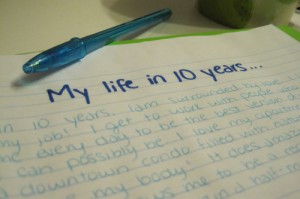 First, make sure you know what’s important to you! What are your long-term goals for your career? Carve out the time for what is important. When I had four children at home and I home-schooled them, people would ask where I found time to write. Basically–you do what is important to you. I don’t know how. For sure, I can’t tell you how. But I know this: if it’s important enough you WILL find time. Somewhere.
First, make sure you know what’s important to you! What are your long-term goals for your career? Carve out the time for what is important. When I had four children at home and I home-schooled them, people would ask where I found time to write. Basically–you do what is important to you. I don’t know how. For sure, I can’t tell you how. But I know this: if it’s important enough you WILL find time. Somewhere.
Second, lists help me a lot. I make a list of things I need to get done and make sure that the list includes those important things, as well as the imperative. It works well for me to cross off things from a list. If something doesn’t get done today, it’s on tomorrow’s list. Well, really, I have a sort of weekly list, a messy piece of paper that sits in front of my computer monitor. I make notes from phone calls and doodle on it. But the list is still prominent. And when that piece of paper gets too messy, I get a new one out and put the current list on it and start again. Shrug. It’s messy, but it works.
Writers write. That next scene may not actually be written on the page at any one time, but believe me, it’s written on the important list in my mind. I always find time to work on something about my WIP novel. Yesterday, I just managed to plan the revision of the next scene. Today, I’ll write that and hopefully, plan the next scene’s revision. But if I can’t get that planning done, I’ll start there tomorrow. I don’t worry so much about how MUCH I get done each day, so long as I’m always chipping away at the task.

Whip out your 'Child For a Day Sunglasses,' and see the world as a child does!I observed a three year old boy with his mum at the library. 'No, not that one Mum. I want a scary story,' he said. 'No, not that one Mum. That's not scary.''Okay,' said Mum, shuffling through more books. They looked through many more books and the young boy kept making the same request. I didn't see if he took any

By:
Darcy Pattison,
on 11/30/2010
Blog:
Darcy Pattison's Revision Notes
(
Login to Add to MyJacketFlap)
JacketFlap tags:
novel,
character,
plot,
scene,
write,
revise,
edit,
how to,
novel revision,
30 days,
stronger,
Add a tag
 From time to time, I pass on information about places to submit other than the children’s book industry. I figure we are writers and being a children’s writer only helps make us more creative. Even though most of us are working on a novel or picture book, we could use our talent to write an article to make some extra money. Southern Living is a magazine you might want to submit an article to for consideration in their magazine.
From time to time, I pass on information about places to submit other than the children’s book industry. I figure we are writers and being a children’s writer only helps make us more creative. Even though most of us are working on a novel or picture book, we could use our talent to write an article to make some extra money. Southern Living is a magazine you might want to submit an article to for consideration in their magazine.
SOUTHERN LIVING – LIVINGS SECTION
The Livings are a series of “insider’s guides” for specific Southern states within the pages of Southern Living. A Living section is delivered to subscribers in the state in which they live (i.e. subscribers with Georgia zip codes receive Georgia Living). Living sections to not cross state borders in delivery or content. Their goal is to provide entertaining and service-oriented stories which inform readers about aspects of their state that surprise, delight, and enrich. Each Living section contains stories based on designated franchises (themes); not all franchises run in every individual issue of a Living in a given month. We aim to provide a selection of the themed stories over the annual run of each section.
THINK: fresh, young, surprising, wow, relevant, visual, who-knew, Southern [or better, your specific state], energetic.
LIVINGS STATES AND MONTHS
Alabama–February, May October
Florida–January, April, November
Georgia–February, April, June, August, October, December
Mid-Atlantic*–March, May, December
North Carolina–March, June, September, November
South Carolina–March, May, September
Tennessee–February, May, August, November
Texas–February, April, June, November
* Mid-Atlantic includes DC, Maryland, Virginia, Delaware
OUR FRANCHISES (please match pitches to the following):
The Best xx in (state): Examples: Best Breakfasts, Best Cocktails, etc. Multiple locations throughout state are desired. This franchise is generally a lede due to its scope…2-3 pages.
Worth the Trip: An out-of-the-way location nevertheless worth the effort.
Day Trip: A 24-hour (or daytime) itinerary; a road trip of sorts with to-do along the way plus at destination.
Insider’s Guide To..: (vineyard, a garden, a neighborhood, an entity of interest). Local is knowledgeable and authoritative, giving info average reader won’t know.
Expert’s Guide To..: One famous (or not) expert picks the best of his/her subject. An overview from one who knows the subject well and shines a light on examples. (Sara Evans picks top music venues in AL, well-known/respected artist picks best examples of art in state).
Behind the Scenes With: A behind-the-veil at a Southern icon. Think big and well-known. Q&A format.
Uniquely (state): What was actually invented, originated, or only exists in that one state–and no other! Example: Ruby Red Grapefruit developed by scientist in Texas. Gatorade, on the other hand, is a Florida invention–but too well known. Needs surprise.
Only In (state): Not an invention, as above, but some thing, event, phenomenon that happens Only In that state.
Opening This Month (or New to xxx, if the “opening” is on an off-month for that Living schedule): Newsey. New museum? New restaurant? Very
The Stuff Between Scenes
Guest Post by Deborah Halverson

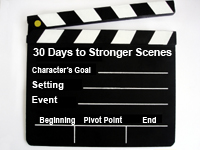 Join us on Facebook for a discussion of scenes.
Join us on Facebook for a discussion of scenes.
As you give thought to what happens in your scenes, give thought, too, to what happens between them. There’s a trove of information and emotion lurking in the white space separating the last line of one scene and the first line of the next. You’re the master manipulator of your story—you should know exactly what’s happening in that space.
Magical Leap. Only in fiction can a kid transport magically from, say, a humiliating moment after school to the next morning when he must deal with the fall-out in the school halls. In real life, we don’t get to skip from scene to scene. We must live those in-between moments, going home and dealing with dinner and the family, doing the dishes and brushing our teeth, trying to sleep only to fail or perhaps achieving sleep only to nightmare—or maybe even sleeping soundly and feeling refreshed in the a.m., determined to take down the bully who served up that monster wedgie during the seventh grade talent show. As a writer, you wouldn’t show all that at-home minutiae to your readers because it would hobble your pacing and nuke the tight tension you’ve built up. But you should know what’s happened in that white space so that you can fully understand how one scene’s ending has simmered and stewed its way into the first line of the next scene.
Simmer. Consider that kid who suffered humiliation—he might interact badly with his family that night if he interacted at all, he’d scrub the dishes and forget to rinse, he’d fumble his dad’s favorite mug and get chewed out, he’d cut his gums with the floss and cry. He’d work himself into a real funk, or a real stink, or a downright rage as his day flowed from terrible to just too much to bear. When something rotten goes down in your life, your minutiae seems to gang up on you, doesn’t it? Don’t start a new scene with the assumption that a character’s emotion and state of mind are exactly where they were when you left him a day or even an hour ago. That’s not realistic and it undermines your scenes. Simmering happens. And that simmering takes place in the white space. By the time your character reaches the opening line of your next scene, he’s in an advanced state of emotion or has had time to hatch a plan, as flawed as it probably will be. Fully understanding how his mindset and emotion have festered during the scene jump allows you to fully exploit both of those things in the happenings of the new scene.
Mull. Mulling is an important part of writing, and that’s what this is—mulling the off-stage events that are part of your character even if you don’t share them with your reader directly. And you won’t. Just as you may know a character’s life story but won’t deliver it when you introduce him, you don’t deliver the stuff in between scenes even tho
 Join us on Facebook for a discussion of scenes.
Join us on Facebook for a discussion of scenes.

Best Length for Scenes?
What’s the best length for a scene? IS there a best length? 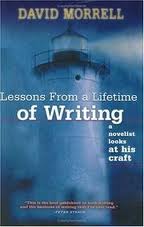 In his book, Lessons from a Lifetime of Writing, action/adventure author, David Morrell (creator of the Rambo character, among others), says he tries to write short chapters (or we can translate this to scenes, too), so that a reader can complete one chapter (or structural unit, i.e. a scene) at one sitting.
In his book, Lessons from a Lifetime of Writing, action/adventure author, David Morrell (creator of the Rambo character, among others), says he tries to write short chapters (or we can translate this to scenes, too), so that a reader can complete one chapter (or structural unit, i.e. a scene) at one sitting.
He bases his ideas on two essays by Edgar Allen Poe, The Philosophy of Composition and The Poetic Principle. Poe argues that short scenes/chapters are better because they accommodate the human form which needs to move around. We get up to go to the bathroom, to relieve a hurting back, etc. By keeping scenes short, you will keep the reader turning pages and actually reading every word.
Morrell says he keeps his structural units small in order to accommodate the reader’s bladder, TV interruptions, phone calls, a neighbor who drops in, etc. Poe’s essay is worth reading, as is Morrell’s chapter on “The Tactics of Structure.”
So, there’s not really a right or wrong. I’ve read 30 page scenes and I’ve read 1/3 page scenes. Whatever works. But if in doubt, short is better than longer. (Kinda reminds me of blog posts! Short is often better.)

 Join us on Facebook for a discussion of scenes.
Join us on Facebook for a discussion of scenes.

Stories that Lose Focus
In Writing for Story, Jon Franklin says that, “As length grows linearly, complexity expands expotentially.” It’s easy to write a scene; write a novel is hard. When someone writes without planning ahead, the danger is what Franklin calls “spaghetting.” It’s small things that cause this, the small omissions, additions, or things slightly off target that gang up on the story to send it into a spaghetti mess. It ’s so out of focus that you can’t untangle it.
Franklin says, “A story is not a line of dominoes, it is a web, and tugging on any filament causes the whole thing to vibrate.”
That’s why every scene needs to have a tight focus. And it’s why every scene needs to fit into the story overall. Or, as John Ciardi and Miller Willams say, a story is a context for making choices; the important thing is connotations speaking to connotations.
Tweaking the Goal of a Scene
So, let’s look at some ways scenes might go wrong, starting with scene goals
Scope. The main character must have a goal that moves the story forward. If the scope of the goal is too large or too small, the scene doesn’t work. For example, if a student’s goal for a scene is to pass a class, that’s too large a goal. It can’t be particularized with specific actions. A goal to answer one test question correctly is too small; the consequences are too small. A better goal is to pass a certain test. That is small enough to be contained in a single scene, and large enough to have consequences that matter and can carry over to the next scene.
Immediate. Scenes need immediate goals, something that can be answered yes or no, right now. Will a student pass a course? That is rarely answerable in a single scene because it’s not immediate, the answer extends over several weeks or months. Passing a test, however, happens immediately. Well, taking a test does anyway, who can say when a teacher gets around to grading a test. But a character can go away with a feeling of having done well or poorly.
Finality. Scenes need to end. Resolutions which allow for undoing something later are weaker than those which end with some finality. For example, if our student finishes the test, only to find out it was a practice test and the real test is tomorrow–the reader will be aggravated with you. You made him worry and live through this test taking and it was just a sham. You just lost a reader! On the other hand, you don’t want results that are too final. A test that’s booby trapped and blows up when you answer incorrectly, well, that really is a Final Test. End of story.
Focus. Scenes need to relate to the main story or throughline. If our test taker suddenly starts editing the grammar of the test itself, h










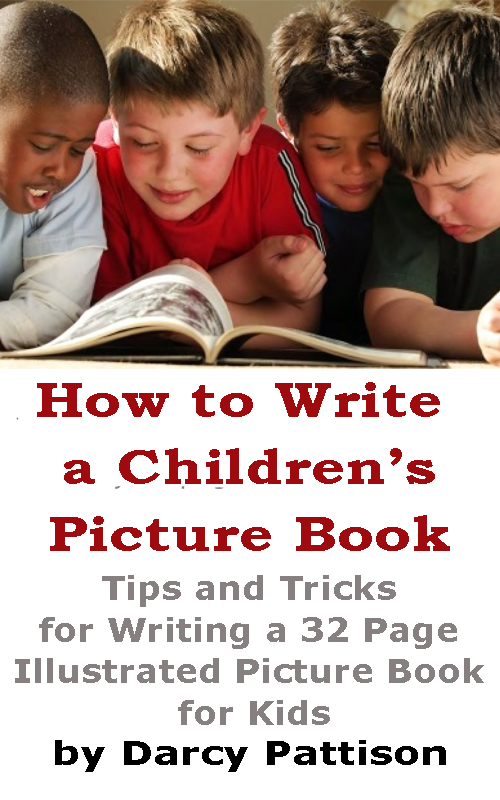


































 From time to time, I pass on information about places to submit other than the children’s book industry. I figure we are writers and being a children’s writer only helps make us more creative. Even though most of us are working on a novel or picture book, we could use our talent to write an article to make some extra money. Southern Living is a magazine you might want to submit an article to for consideration in their magazine.
From time to time, I pass on information about places to submit other than the children’s book industry. I figure we are writers and being a children’s writer only helps make us more creative. Even though most of us are working on a novel or picture book, we could use our talent to write an article to make some extra money. Southern Living is a magazine you might want to submit an article to for consideration in their magazine. 



 In his book, Lessons from a Lifetime of Writing
In his book, Lessons from a Lifetime of Writing



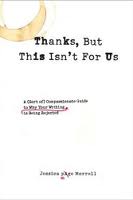


Oh my -I love your slate/chalkboard look! It’s so readable too which isn’t always true with white font. Congrats on all the progress made on submissions, house, school visits and writing! I drop out of blogging too from time to time. Will probably do so again unless I turn into Wonder Woman also known as Proverbs 31 Woman.
Donna,
Glad to know you made it out alive. Love ya!
Linda